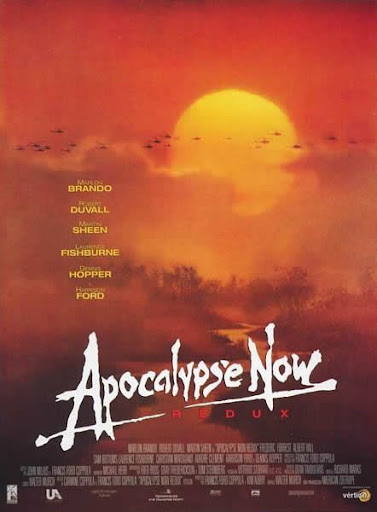Korg Accessories "Do you feel locked in" 1/2-page advertisement including MS-02 Universal Interface, MS-03 Signal Processor, MS-01 Foot Controller, SQ-10 Analog Sequencer, MS-50 Monophonic Synthesizer, and PCK-1 and PCK-2 Synthesizer Patch Cord Sets from page 8 in Keyboard Magazine February 1980.
Putting the design aspects of this ad aside for a second, I gotta say this has always been a stand-out ad for me. From a gear-freak perspective it puts some of the Korg pieces I've always craved to play with into a very small space. From the perspective of my appreciation of their marketing strategy, the first sentence of the ad-copy sums up Unicord/Korg's positioning of all this gear in the market:
"Do you feel locked-in because you can't expand outside your synthesizer brand?"
Synthesizer companies, including Korg, had spent years developing their own proprietary technologies, and on purpose or not, "locked-in" their users by implementing their own controls. It wasn't a perfectly walled garden, but it did a pretty effective job at keeping owners from buying outside their brand. Until quite recently (relative to the appearance of this ad), most consumers were only buying one or two synthesizers due to their high costs, and it was a lot easier to sell the consumer the second instrument if all those other synthesizers and sequencers from other companies weren't compatible with that first one they bought.
But, as prices for synthesizers dropped and synth stacks grew, demand also increased for gadgets that could link different brands of synths together. Korg acknowledged this situation and wanted to make sure they could accommodate these growing needs.
Unfortunately, due to the nature of the ad (I'll get to that in the second half of the blog post), not much could be said about each piece of equipment. But luckily two of the products made it into the Spec Sheet section of Keyboard Magazine two months earlier in the December 1979 issue.
"The MS-50 synthesizer expander module has a multi-mixable waveform VCO, VCF, two VCAs, a highpass filter, two envelope generators with normal and inverted outputs, an LFO, a variable voltage supply, a 3-channel amp, a signal inverter, a ring modulator, a sample-and-hold, a pink/white noise generator, waveform dividers, an envelope follower/trigger detector, an AC/DC meter, a manual triggering switch, a headphone amp, and multiples."
"The SQ-10 analog sequencer is a 3x12 sequencer with separate portamento
controls for two of the outputs, linear and exponential clock speed
inputs for step spacing variation, and remote start, stop, and step
capabilities. the unit can be used to drive up to three separate
synthesizers. Pirce is $500.00. Korg, 89 Frost St., Westbury, New York,
11590."
To find out more on the other pieces of gear, Google away. Lots of good info online - for example,
this MS-02 page.
So, about the design of this ad....
Just as Korg was acknowledging that many musicians felt "locked-in" by their synthesizer brand, I'm sure the designer felt "locked-in" when someone broke the news to him that he was building the ad. I'm guessing that this is how the conversation went down
*:
(* some kind of legal disclaimer: This is very likely NOT AT ALL how the conversation went down)
Creative director: Hey Bob, finally got all the pieces of that new Unicord ad for you.
Designer: Awesome. I'm a big fan of Korg gear.
CD: Okay. Great. First, here's five photos of Korg gear Unicord wants to includ in the ad.
Designer: Wow - nice stuff. These will look great in a full page spread.
CD: Yah, about that. Since this is really just promoting Korg's line of accessories, they've decided to go with a half-pager.
Designer: Huh. * thinks a little bit * Okay, no problem. The photos will be a little dark when printed so small, but we can maximize each photo's size to fill the available space and can select a few accent colours to help balance everything out.
CD: Um... actually, it's a black and white ad. The budget was really slashed for this one since for the last two years Unicord has really been burning through cash placing multiple full-page advertisements in pretty much every issue of Keyboard -
the MS-10 and MS-20 synthesizer,
Sigma synthesizer,
Lambda Polyphonic Ensemble, and
VC-10 vocoder. So, yah - this one is black and white only. Did I mention half-page?
Designer: * nods head *
CD: Great. Oh, and here is the ad-copy. I know it looks a little long at around 200 words, but you can fit all those words in around the images, can't you? Try using really compact letters.
Designer: They're called "fonts".
CD: What? Whatever. No one will ever have to know technical terms like "fonts". Hey - also, try using something fancy, like italics. Those always look good in ads.
Designer: Italics will make the words harder to read, especially in such a small forma...
CD: * interrupts * Whatever. Just do it. Oh, did I mention the VP of Marketing's son is taking "Space" in his
grade two science class and it would be really great if you could include a large unnecessary
photo of the Earth in the ad?
Designer: Ummm... *grabs sketch pad* Here... kinda like this...?
CD: Yaaaaah... no... Could you put it right in the centre of the ad? Oooh, yeah, like that. Now make that Earth photo larger...
laaaaarger. You know, the photo of the Earth represents Korg's growth and world-wide presence. We're sending a message to the reader.
Designer: I got that. But it really takes up a lot of space that could be used to help layout all that content you just gave me. And don't you think the three or four full-page Korg ads that have been appearing in each issue of Keyboard for the last two years has already given readers the impression that Korg is a world-wide company?
CD: *stares at designer in silence*
Designer: *stares back*
CD: So, you'll make that photo little larger?
Designer: *under his breath* Fuck me.







































